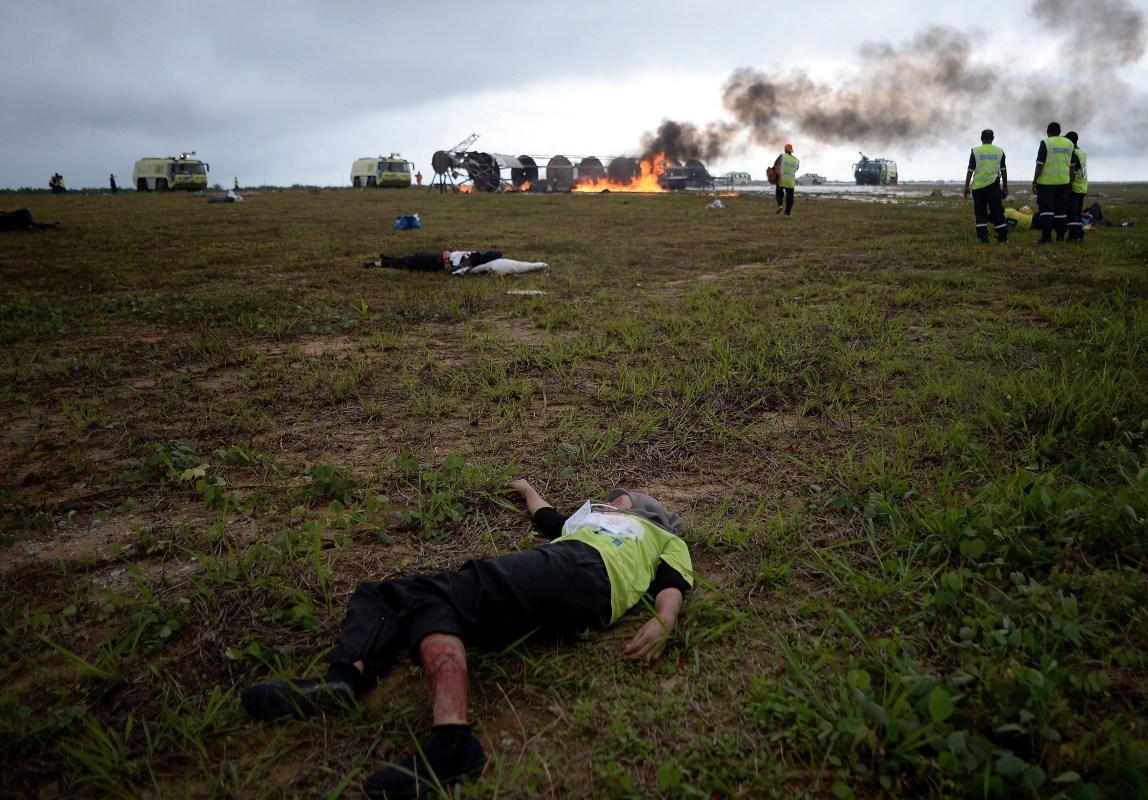Participants in a disaster training and assessment exercise essentially look like zombies. They are covered in terrible burns on their faces, they have blood streaming from holes made by shrapnel, leg lacerations studded with airplane parts. But they all mill about, smiling and joking with each other as they wait for the simulation to start. Wired participated in a training at the airport with about 60 other people, some locals with a free Wednesday morning and a few EMT trainees who get class credit for agreeing to the exercise. When an exercise happens, Michael Crane, assistant manager for operations at Burbank Airport, told Wired that they activate as much as they can without shutting down the airport. Any passengers in the terminal or arriving on flights are told that there is a drill happening to avoid any panic. The drill includes setting off an explosion, and soon the airport’s fire trucks scream onto the scene and firefighters work through the flames with water and foam. A firefighter comes onboard, yelling, “Can you walk?” Any firefighter on board has to quickly assess passengers: Who can get off, who needs help, who is beyond help. “With fatalities, we’re leaving the body where it’s at,” says the airport’s fire captain, Mark Domingo, to Wired. “They’re part of the investigation.” Outside the plane, medics treat the seriously wounded, who are laid atop tarps on the ground. Everyone gets a color-coded string around their neck: green means minor injuries, wounds that need immediate transport to the hospital are red. Pink means contaminated by something, like a fuel spill or radiation from a “dirty bomb” attack. Evaluators walk around the exercise to judge how well the airport is doing. Though modern commercial aviation has a tremendous safety record, drills like the one Wired attended helps minimize damages when things do go wrong.
Thanks for reading InsideHook. Sign up for our daily newsletter and be in the know.


















